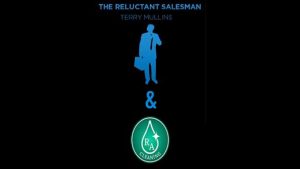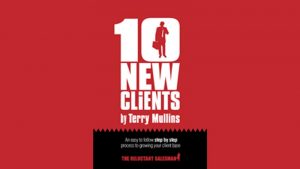
Making Selling Simple in the Cleaning Sector
Here’s how our latest client, Rest Ashore Cleaning an eco-friendly cleaning company in Cornwall, discovered the way that The Reluctant Salesman’s simple processes made an immediate impact. As

I want to revisit a couple of things I have raised in previous articles…
If you have ever heard me talk about money, then you will know that I believe there’s no such thing as too expensive. I mention this because I am only too aware that people get hung up on getting their prices right and they often attribute their sales failure to getting their price wrong. Another thing you may have heard me say is people seldom buy what they need, they usually buy what they want. I’m about to give you an example of both.
These two ideas came together beautifully this week when I read about the Patek Phillipe 5004T. It’s a watch and it’s a bit pricey… if you want one it will set you back £2.98 million.
Now is £2.98 million too expensive for a watch? Well, it certainly would be for me but as each one they produce is snapped up straight away clearly it is not too expensive for everyone. I think this shows that while there is no such thing as too expensive, there clearly is a thing called ‘I can’t afford it’.
OK, what about this want and need business?
Modern technology has made a lot of things that we might have once needed almost obsolete – rolls of film, fax machines and encyclopaedias, for example – and we really should have added watches to that list by now.
One thing we are not short of is ways of telling the time. Just about every appliance you own displays the time: your laptop and phone, of course, but your coffee machine, dishwasher and microwave could probably help you out with a super accurate time update if needed.
Nobody needs a watch anymore but plenty of people still want to buy them, including me. Ergo, we don’t buy what we need we buy what we want.
You may question this and say ‘what about food and clothing – we buy those because we need them’, and that’s perfectly true except we don’t just buy any old food or clothing; rather, we make certain compromises based on our personal preferences and what we can afford, then buy what we want within those parameters. That’s why I have a watch that I don’t really need that cost way more than I had to spend.
Ok, so now we know that when someone wants something and they can afford it, chances are they will buy it, and this leads us to the concept of targeted selling, or put more simply, choosing clients. At The Reluctant Salesman we advocate a pro-active approach to finding clients by first identifying who the right clients are and then finding simple ways to engage with them. The first criteria question to ask is always ‘can they afford it?’ and if they can’t then you don’t contact them. Simple, isn’t it?
But do you know who your clients are? Most businesses think they do but they often don’t. They try to sell to whoever comes through their door and end up spending a lot of time talking to the wrong people and, worse still, occasionally selling to the wrong people. That’s bad because the old adage ‘profit is sanity, turnover’s vanity’ is still true and when you are accommodating somebody else’s customer, you are lowering profit.
Client Check
Look at your client base and ask yourself do all your clients generate the same level of profitability? Are you doing work for some and charging less than you charge others? Do you have clients who are frankly more trouble than they’re worth? If the answer to any of these questions is yes, for any of your clients, then chances are they are not really your clients because you didn’t choose them – they picked you.
You might consider a little client weeding and getting a pro-active client acquisition strategy. It may not mean you will be able to afford a Patek Phillipe 5004T but it will make your business more profitable.

Here’s how our latest client, Rest Ashore Cleaning an eco-friendly cleaning company in Cornwall, discovered the way that The Reluctant Salesman’s simple processes made an immediate impact. As

This month I am doing something a little different. Instead of a book review I am giving you a sample of the new book I